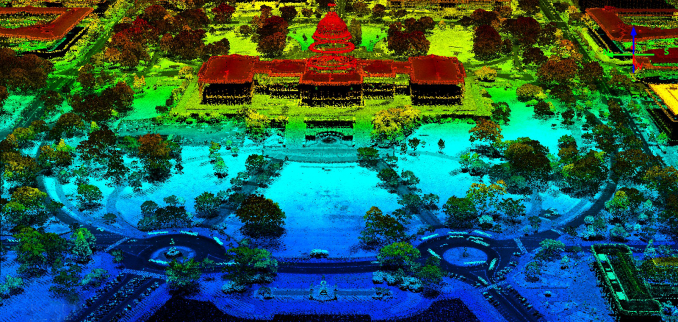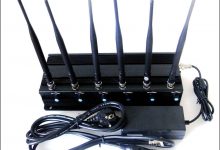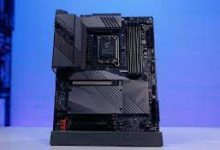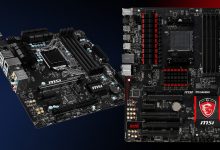What Do You Understand By LIDAR?

Index Of The Blog
LIDAR

LIDAR is a remote detecting innovation that represents the light location and extending which utilizes the beat from a laser to gather the information that measures and makes 3D models and maps of inaccessible articles and conditions.
A LIDAR framework works in a way that is like radar and sonar yet rather than sound or radio waves utilize light waves from a laser. A LIDAR framework utilizes “Time of Flight estimations which figures the measure of time that the light takes to arrive at the article being contemplated and the time that it takes to reflect back to the scanner”. The information is then deciphered utilizing the speed of light which is 299,792,458 meters for every second. The pace of terminating beats in a LIDAR framework is around 160,000/second. The information that is determined is then changed over to a 3D representation known as “point cloud”. The point thickness is about not exactly a meter and the vertical exactness is about 15cm while the flat precision is about 40cm.
LIDAR Mapping
LIDAR with the assistance of a laser filtering framework that is coordinated with the Inertia Measurement Unit(IMU) and GNSS beneficiary estimates each point in the subsequent point cloud with georeferenced. Each point from the point cloud is then consolidated to make the 3D picture of the objective article or the territory.
LIDAR maps give both total and relative positional exactness that enables the client to decide the area from where the information was taken and how each point identifies with the article as far as separation.
LIDAR maps can be utilized to delineate urban communities with exactness up to millimeters of structures and territories in that. LIDAR maps are useful in extricating basic subtleties and grouping articles, for example, spans, street systems, vegetation and other auxiliary subtleties of a city. Similar time pictures of a territory can help generously in understanding the progressions and impacts of ecological factors, for example, disintegration, corruption forestation and so on.
Parts of LIDAR Framework
The Light Detection and Ranging framework have 4 primary parts that work together to deliver profoundly exact pictures of the articles or region being examined. They are:
LIDAR Sensors: It fires the laser beats as it checks the ground from side to side.
Situating and Route Framework: GPS recipients track the height and precise area of the plane. The Inertial estimation units or the IMU tracks the tilt of the plane as it flies and flames the beats. Height figurings are made utilizing the tilt of the plane to gauge the occurrence point of the beat.
Scanners: The quality and speed of the picture that is created relying on the speed at which they are filtered. The scanner incorporates double wavering plane mirrors and a mix with a polygon reflect and a double pivot scanner. A shaft splitter is utilized to get the arrival signal. The nature of optic decisions utilized decides the precise goals and range that can be recognized.
Computers: All the information that is gathered is recorded and changed over into pictures.
Yields of LIDAR:
Number of Returns: LIDAR works by conveying beats that cross a similar route as light beams. At the point when the beats are coordinated towards a forest, they are reflected once more from different surfaces that it hits before hitting the ground. The beats are reflected back by the leaves, branches and afterward by the ground. The quantity of profits of the beats gives important data in understanding the structure of the woodland and the state of the trees.
Digital Elevation Models: LIDAR is oftentimes utilized in the DEM of uncovered earth surface models. These models are gotten from the last returns that are sifted through from the different returns of the beats that hit the ground. The focuses are then interjected to get the advanced height model maps with learning ArcGis that can help in recognizing the inclines with the degrees in rising and fall, slant heading and slope conceal.
Canopy Height Model: A covering stature model produces the guide with subtleties of what are the structures on the ground like trees and structures. The distinction between the first and the last return is determined to decide the genuine stature of the topological highlights on the ground.
Light Intensity: Based on the synthesis and the point of the outside of the items the quality or the power of the arrival beat fluctuates. The variety in the arrival LIDAR light force is valuable in identifying the arrangement of the particle surface as well as comprehend its basic highlights.
Point Classification: The American Society for Photogrammetry and Remote Sensing (ASPRS) has rattled off a lot of order codes for LIDAR. A solitary point order may fall into more than one classification in which case the fact of the matter is allowed an auxiliary class.
The capacity of The Return
The LIDAR beat that is returned can be put away in two distinct ways. It very well may be put away either as Full waveform or as Discrete LIDAR.
At the point when the beats hit the different structures on the ground, it is restored on different occasions relying upon the structure. For instance, on the off chance that it is a tree, at that point the top branches return the beats first then it is returned by the mid and afterward by the most minimal branches before being returned by the genuine ground surface. At the point when the information is recorded as isolated returns, it is called a Discrete return LIDAR. At the point when the entire return information is recorded as a consistent wave then it is called a Full Waveform LIDAR.
LIDAR information is put away in the LAS record group as a point cloud kept up by ASPRS. The LAS group guarantees a safe trade of information among merchants and clients.
Kinds of LIDAR Systems: There are four essential sorts of LIDAR framework examined beneath:
Ground-based LIDAR: This kind of LIDAR framework is determined to a tripod which filters half of the globe. It is useful in filtering structures and other raised structures. It is often utilized in topography, ranger service, and development applications.
Profiling LIDAR: This was one of the underlying kinds of LIDAR framework that was utilized during the 1980s to quantify single line highlights. The Profiling LIDAR framework conveys a solitary heartbeat at once in one line. It estimates rise single transect with a solitary fixed Nadir point.
Larger Footprint LIDAR: This kind of LIDAR utilizes full waveforms and the profits are found the middle value of in 20m impressions. This type of LIDAR is once in a while utilized because of the trouble in getting the territory from a huge impression LIDAR return. Just two LIDAR frameworks with the enormous Footprint type; SLICER and LVIS has been made by NASA as a trial.
Smaller Footprint LIDAR: This is the normal kind of LIDAR framework that is utilized today. It examines at around 20 degrees edge both in reverse and advances. There are two primary kinds of Small impression LIDAR; Topographic LIDAR which is utilized to outline surface and Bathymetric LIDAR which is utilized for mapping ocean bottom and riverbeds or some other water bodies.
Applications of Lidar
Geology and soil science: The investigation of topological maps utilizing LIDAR innovation helps in deciding the land surface rises on uncovered earth as well as underneath shelter and submerged also. LIDAR innovation has been adequately utilized in contemplating the adjustments in land topology which encourages researchers to comprehend physical and concoction forms prompting scene shapes. Incline changes and landform breaks help to comprehend designs in soil spatial connections.
Atmosphere: LIDAR innovation has been utilized in the scope of estimations like cloud profiling, contemplating pressurized canned products, estimating environmental segments and wind speed.
Biology and Conservation: LIDAR framework permits the estimations of covering statures and biomass. The deferred intelligent record additionally helps in deciding the kind of foliage accessible in a territory. With an age of maps and identification of fluctuated foliage, preservation steps can be taken for a specific district or a kind of animal type.
Autonomous Vehicles: Self-driven or self-ruling vehicles use LIDAR innovation to distinguish any obstructions or different vehicles in its region. This causes the self-sufficient vehicles to keep away from the snags and explore securely.
Archaeology: Archeology utilizes LIDAR to help in arranging field battles, make high-goals DEMS of archeological destinations uncover microtopography, Mapping land surface secured by vegetation and mapping an expansive review of a region which isn’t noticeably starting from the earliest stage.
Agriculture: Agricultural robots work on LIDAR innovation to explore around and dissect the yield rates on various zones of the farmland. This discovers the need for manures and weed control. Numerous rural research associations utilize the topological maps got from a LIDAR framework to recognize the districts with ideal conditions for a yield type.
Rock Mechanics: The utilization of LIDAR in the investigation of shake mechanics helps in understanding the adjustments in the separating, direction, opening, diligence, harshness and water invasion in the stones. This shows signs of improvement comprehension of the slant changes and other geomechanical properties of the stones.
Military: The military has utilized LIDAR innovation in a significant number of its capacities the investigation of territories utilizing topological maps of exposed earth surface and that covered up for vegetation. This innovation has been utilized to plan the identification of organic dangers and landmines to prevent any accidents. Unmanned vehicles or self-sufficient vehicles have been presented in the military that capacities on LIDAR innovation.
Law Enforcement: LIDAR innovation is utilized in the Speed weapon that is utilized by the police to quantify the speed of a vehicle. LIDAR additionally finds a huge use in measurable investigations to identify shot direction and wrongdoing scene examines.
Solar Photovoltaic Deployment: LIDAR innovation is utilized to outline recognize the correct spaces and areas for setting up Solar Photovoltaic frameworks.
Wind Farm Optimization: LIDAR is being utilized in estimating the breeze speed and wind choppiness to help in the expansion of the vitality yield of the breeze ranch. The episode wind can be estimated with the goal that the sharp edges can be changed in accordance with diminish harm and boost the yield.
Forestry: LIDAR has helped in understanding the extent of the forest boundaries and the type and thickness of the vegetation. The information gathered can help in deciding the age of the trees, the species, and other factual data.
Surveying: LIDAR is prominent with organizations in the remote detecting field to review a territory utilizing the Digital rise models and Digital Terrain Models that aides in finding out the ground rise as well as the shade tallness also.
Spaceflight: LIDAR is utilized for run finding and orbital count of relative speed with the end goal of nearness activities and station-keeping a shuttle. LIDAR is additionally utilized in recognizing and distinguishing particles in the air and space.
Robotics: LIDAR innovation has been coordinated with apply autonomy to get high degree exactness of ecological recognition improving the exhibition and precision of its capacity.
Mining: Robotic mining vehicles with LIDAR sensors are utilized in mines to explore in the mines. Mineral volumes is additionally determined by deciding the adjustments in the territory of the metal evacuation
Physics and Astronomy: LIDAR is as often as possible utilized in the field of climatic material science to decide the breeze speed and the substance of different components in the higher strata of the air. LIDAR innovation has been widely utilized in the field of space science to examine the outside of the moon and different planets like the blemishes.
LIDAR has been coordinated with different innovations to enhance the usefulness and the final result. LIDAR has not just discovered a route into the different fields of study, however, it is as a rule effectively joined into computer games virtual designs reenactment to elevate the experience. LIDAR has been additionally utilized with the Structure from Motion Technologies which permits the conveyance of 3D pictures and maps separated from information obtained from visual and IR photography. The high-goals symbolism and its ability to focus on a wide scope of materials from enormous rocks to the littlest atoms have made LIDAR a ground-breaking and prominent innovation in different fields. Click here to learn more
Some of The Tools Used for LIDAR are
Global Mapper LiDAR Module – Global Mapper is simple to bear the cost of GIS programming which suits both new and propelled clients. This product has all the significant instruments, an expansion that is required to do the GIS investigation. It is anything but difficult to utilize. Click here to know more about tools like this
LIDAR Module: This adds a propelled LIDAR capacity to the product. A portion of the development LIDAR highlights are programmed point cloud arrangement, include extraction, cross-sectional survey and altering, drastically quicker surface age, and some more.
Lizardtech – LIDAR Compression Tool – This organization has various intriguing devices for the GIS framework. One of the famous instruments for the LIDAR information is LiDAR Compressor. LIDAR packs the LIDAR information which decreases 25 percent of the absolute size while holding each arrival. It packs the information in the MrSID position. It is anything but difficult to deal with as well.
LP360 – It is an augmentation to the ArcMap which turns it LIDAR handling ability as it were. It very well may be utilized in an exceptionally huge dataset. LP360 is accessible in three capacities. It has instruments from fast perception and determined item age. Additionally, in cutting edge highlights, it gives programmed ground characterization and building impression extraction.
Also Know: Benefits Of Smart Queue Management Systems
FME – FME is known as Feature Manipulation Engine which has many apparatuses for information change. A portion of the apparatuses is utilized for the LIDAR point cloud information. You can move LIDAR information into different configurations rapidly and effectively.
GRASS GIS LIDAR Tools – Grass is the most prominent open-source GIS programming that has LIDAR devices for preparing point cloud and utilize the yield created for the GIS investigation. It, stools bolsters essential and propelled LIDAR information handling and investigation.
To get in-depth knowledge about LIDAR you can enroll for live ArcGIS Training by Edunbox with 24/7 support and lifetime access.
Also Know: Differences Between Power BI And SSRS
Author Bio
Rohit Agarwal serves as an SEO Executive in Edunbox and there he handles all works related to SEO and Content Writing.













